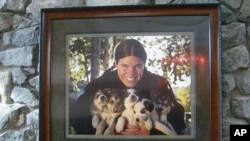When you hear the words “adventure travel,” perhaps you think of Venetian merchant Marco Polo, the distinguished African explorer David Livingstone, or North Pole adventurer Robert Peary. Nowadays, it conjures up images of muscular guys mushing sled dogs to victory in Alaska’s Iditarod race, or tethered to bungee cords and jumping off bridges into canyons.
MEN exploring and climbing, mushing and jumping.
But dozens of women have climbed Nepal’s Mount Everest, the world’s tallest peak. Others have mapped continents and commanded space flights. Two hundred or so years ago, it was a Native American woman who guided the explorers Meriwether Lewis and William Clark on their journey of discovery through the Pacific Northwest.
Just last year, British ocean rower Roz Savage became the first woman to cross the Pacific Ocean alone, in a rowboat.
In fact, women are the fastest-growing segment of America’s “adventure travel” industry. Books with titles such as Gutsy Women and travel organizations like “Woodswomen” serve the swelling interest in women-only canoe trips, backpacking expeditions, and other strenuous adventures.
Women are already used to the complexities of ordinary family travel. Now, many want something more invigorating. One of the lures of adventure travel is the opportunity to share it with their daughters or granddaughters. For others, it’s the chance to challenge themselves without worrying about the needs of kids or husbands or boyfriends for a change.
“There are many women who say, ‘I’m afraid I couldn’t keep up,’” one female adventure traveler told the Baltimore Sun. “I love watching women get over their self-imposed limitations.”
Older women already predominate on organized sightseeing tours. Now, women of all ages are getting off the bus and striding vigorously into remote, rugged, and remarkable places.













